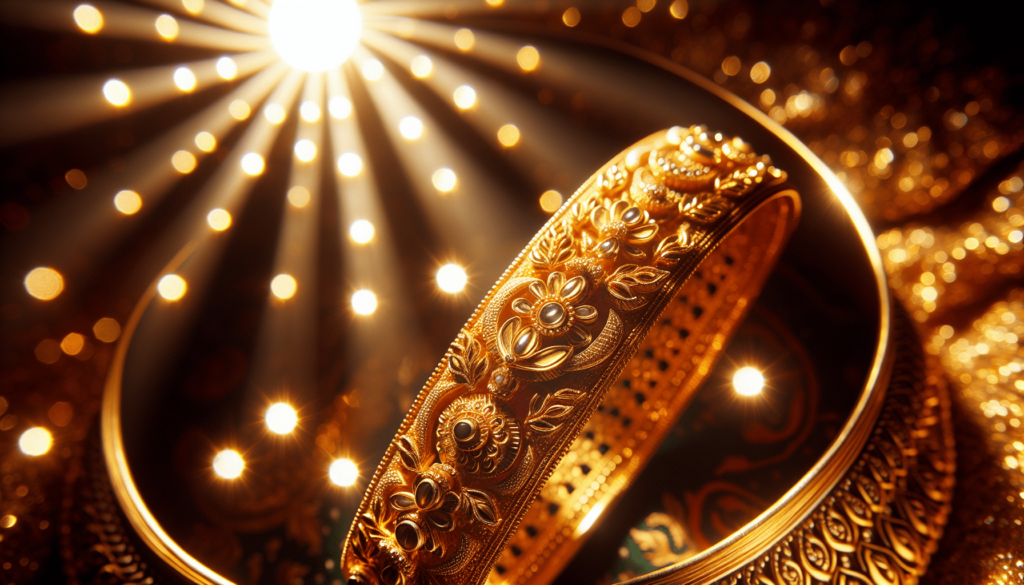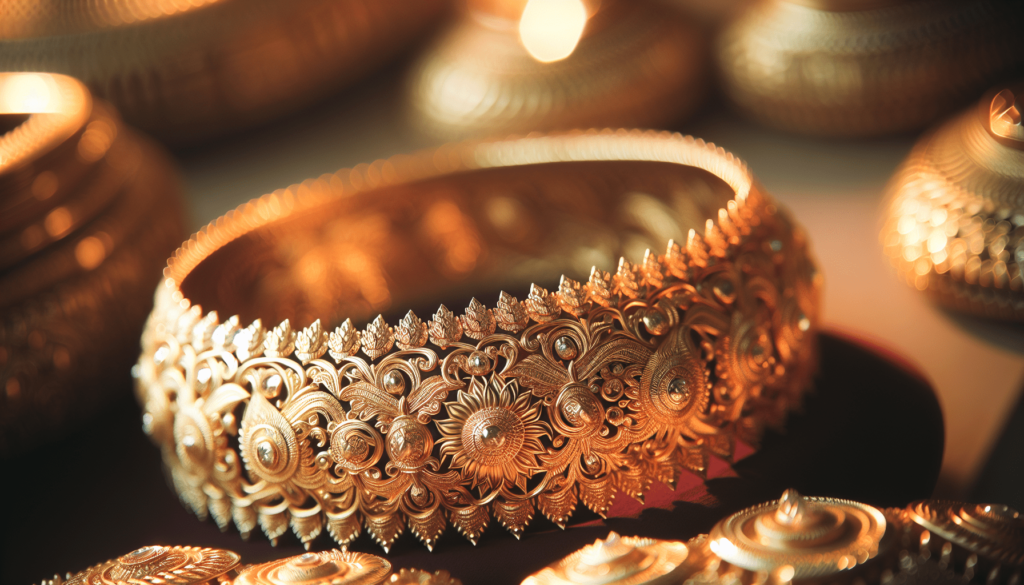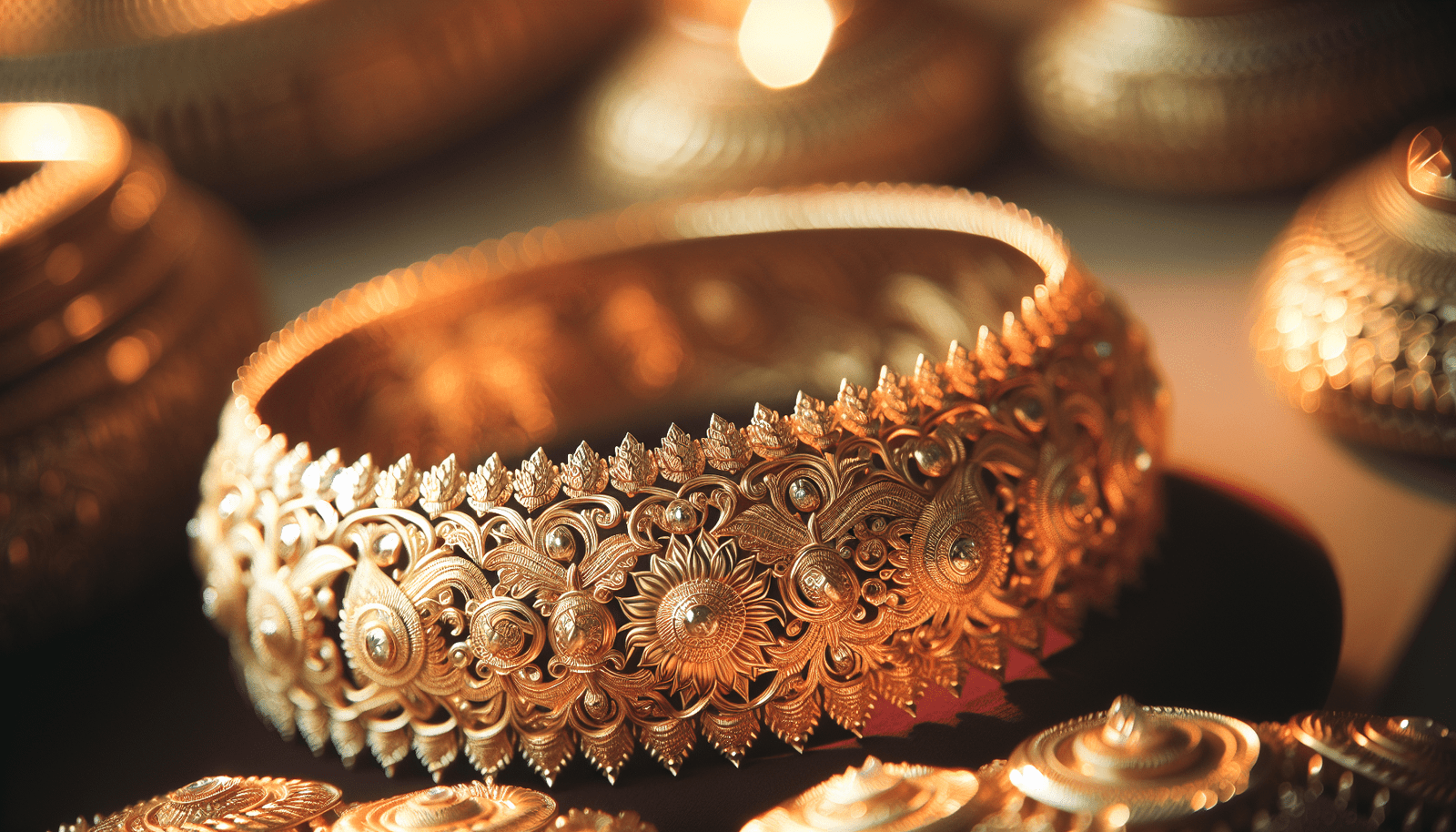Welcome to the fascinating world of traditional festivals and their rich cultural significance! In this article, we will delve deep into the importance of gold in various traditional celebrations around the world. From dazzling jewelry and elaborate decorations to symbolizing wealth and prosperity, gold plays a central role in many cultures during festive occasions. Join us on this journey as we explore the shimmering beauty and symbolic value of gold in traditional festivals. Have you ever wondered why gold is such a prominent feature in traditional festivals all around the world? From religious ceremonies to cultural celebrations, gold holds a significant place in many festivities. Let’s explore the importance of gold in traditional festivals and uncover the meanings behind this precious metal’s presence in various cultural events.

The Symbolic Meaning of Gold in Traditional Festivals
Gold has been revered for centuries due to its rarity, durability, and beauty. In traditional festivals, gold is more than just a precious metal – it holds symbolic meanings that are deeply ingrained in cultural and religious beliefs. From representing prosperity and wealth to symbolizing purity and divinity, gold plays a vital role in conveying profound messages during traditional festivities.
Prosperity and Wealth
In many cultures, gold is associated with prosperity and wealth. The shimmering allure of gold symbolizes abundance and financial success, making it a fitting symbol for festivals that celebrate good fortune and prosperity. During traditional festivals, gold ornaments, jewelry, and decorations are often prominently displayed to invoke blessings of wealth and prosperity upon the participants.
Purity and Divinity
Gold is often linked to purity and divinity in religious and spiritual contexts. The radiant glow of gold is believed to represent the divine presence and sacred power that transcends earthly realms. In traditional festivals with religious significance, gold artifacts, statues, and symbols are used to honor deities, saints, or spiritual figures, emphasizing their elevated status and holy essence.
The Cultural Significance of Gold in Traditional Festivals
Beyond its symbolic meanings, gold holds cultural significance in traditional festivals, reflecting the unique values, traditions, and heritage of different societies. The use of gold in festivals is deeply rooted in historical customs, artistic expressions, and social norms that have evolved over generations. Through the incorporation of gold in traditional festivities, cultures preserve their rich heritage and express their cultural identity with pride.
Traditional Attire and Accessories
One of the most striking ways gold is showcased in traditional festivals is through traditional attire and accessories. In many cultures, clothing adorned with gold embroidery, embellishments, or threads is worn during special occasions and festive ceremonies. The intricate designs and intricate patterns of gold-infused fabrics add a touch of elegance and grandeur to the celebrations, reflecting the cultural richness and artistic finesse of the community.
Decorative Elements and Artistic Displays
Gold is often used as a decorative element in traditional festivals, adorning ceremonial venues, altars, shrines, and procession routes. Intricately crafted gold ornaments, statues, sculptures, and decorations are meticulously displayed to create a visually stunning ambiance that captivates the participants and spectators. The artistic displays of gold craftsmanship not only enhance the aesthetic appeal of the festivities but also showcase the cultural heritage and artistic skills of the community.

The Ritualistic Use of Gold in Traditional Festivals
In addition to its symbolic and cultural significance, gold is also used in ritualistic practices during traditional festivals to convey spiritual meanings and invoke divine blessings. The ritualistic use of gold involves ceremonial offerings, blessings, and rites that are performed with reverence and devotion to appease deities, ancestors, or higher powers. Through these ritualistic practices, participants seek spiritual protection, guidance, and blessings for themselves and their communities.
Gold Offerings and Sacrifices
Gold is often offered as a sacred gift or sacrifice during traditional festivals to honor divine beings, seek their favor, or express gratitude for blessings. The act of presenting gold offerings symbolizes devotion, humility, and reverence towards the spiritual forces that govern the universe. Whether in the form of gold coins, jewelry, or artifacts, these offerings are made with deep faith and sincerity to establish a spiritual connection with the divine.
Blessings and Prayers
During traditional festivals, gold is used in blessing ceremonies and prayers to invoke divine blessings and protection upon the participants. Priests, shamans, or spiritual leaders may use gold artifacts, objects, or symbols to convey blessings, perform rituals, or conduct sacred ceremonies that bestow blessings upon the attendees. The presence of gold in these ritualistic practices signifies the sacredness and sanctity of the blessings being imparted, heightening their spiritual impact and significance.
Gold Festivities Around the World
Traditional festivals that feature gold as a prominent element can be found in various cultures and regions across the globe. These gold-themed festivities showcase the beauty, diversity, and cultural richness of different traditions, offering unique insights into the significance of gold in traditional celebrations. From glittering processions to elaborate rituals, these gold festivals captivate the senses and inspire awe with their grandeur and splendor.
Diwali – Festival of Lights (India)
Diwali, also known as the Festival of Lights, is one of the most significant festivals in India that prominently features gold decorations, ornaments, and symbols. During Diwali celebrations, homes, temples, and streets are adorned with gold lamps, candles, and lights to symbolize the triumph of light over darkness and good over evil. The radiant glow of gold illuminates the festive ambiance, creating a mesmerizing spectacle of colors and lights that symbolize prosperity, happiness, and spiritual enlightenment.
Chinese New Year (China)
In China, the Chinese New Year is a vibrant and festive event that showcases the cultural importance of gold in traditional celebrations. During the Chinese New Year festivities, gold coins, ingots, and decorations are prominently displayed to usher in good luck, prosperity, and wealth for the coming year. The golden hues and shiny textures of the decorations symbolize fortune, happiness, and abundance, bringing blessings of prosperity and success to the participants and their families.
Carnival (Brazil)
Carnival in Brazil is a lively and colorful celebration that features elaborate costumes, parades, and performances adorned with gold accents and embellishments. The dazzling displays of gold feathers, sequins, and accessories highlight the festive spirit and artistic creativity of the Carnival participants, adding a touch of extravagance and opulence to the celebrations. The use of gold in Carnival symbolizes joy, festivity, and exuberance, reflecting the vibrant energy and cultural vibrancy of Brazilian traditions.
Preserving Gold Traditions in Modern Times
As the world continues to evolve, traditional festivals are faced with the challenge of preserving their gold traditions and cultural heritage in modern times. The modernization of society, technological advancements, and changing lifestyles have brought about new perspectives and preferences that may impact the relevance and significance of gold in traditional festivals. However, many communities are embracing innovative approaches to safeguard and promote their gold traditions for future generations to appreciate and cherish.
Heritage Conservation and Promotion
To preserve their gold traditions, many communities are actively engaging in heritage conservation and promotion efforts to safeguard their cultural legacy. By documenting historical practices, organizing cultural events, and supporting traditional artisans, communities are able to promote the beauty and significance of gold in their festivals and enhance public awareness and appreciation for their cultural heritage.
Adaptation and Innovation
In response to changing societal dynamics and modern influences, traditional festivals are adapting and innovating their gold traditions to appeal to contemporary audiences and cater to diverse interests. By incorporating modern elements, creative designs, and interactive experiences, festivals are able to revitalize their gold traditions and attract new generations of participants who can experience and enjoy the cultural richness and artistic expressions of the festivities.
Conclusion
In conclusion, gold’s importance in traditional festivals transcends its material value and shines as a symbol of prosperity, purity, and cultural heritage. From symbolic meanings to ritualistic practices, gold plays a multifaceted role in traditional festivities, enriching the spiritual, artistic, and cultural dimensions of the celebrations. By exploring the significance of gold in traditional festivals, we gain a deeper appreciation for the historical, religious, and social influences that shape our cultural identities and connect us to the timeless beauty and richness of our heritage. Next time you witness the glimmer of gold in a traditional festival, remember the profound meanings and traditions that it represents and celebrate the enduring legacy of this precious metal in our shared human experience.

